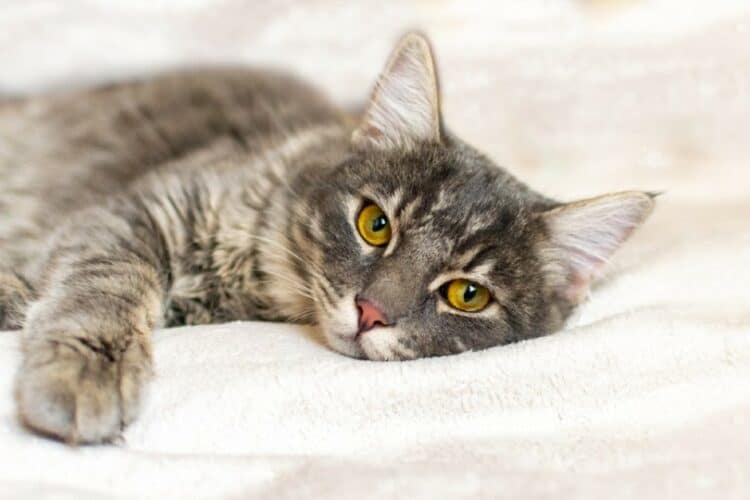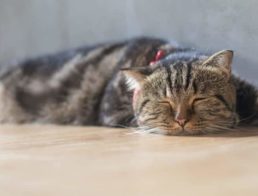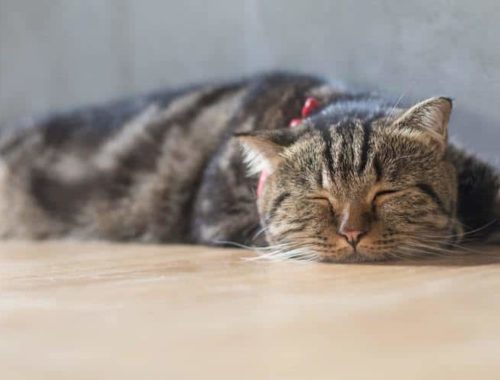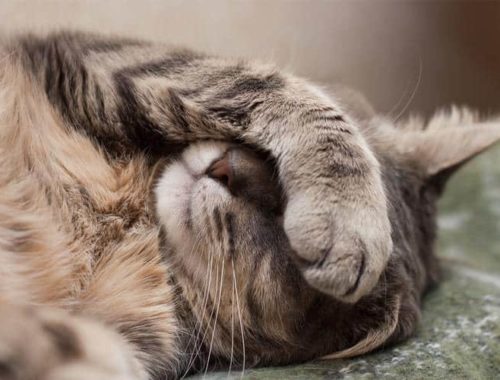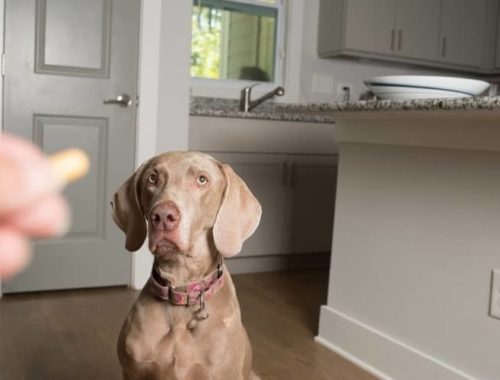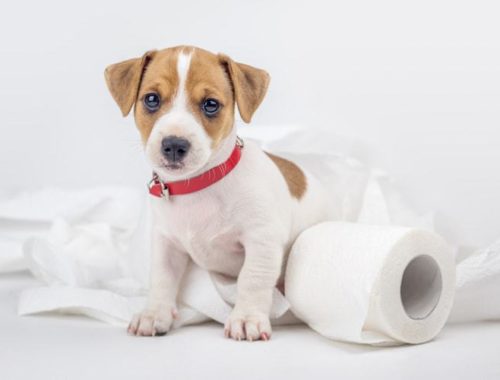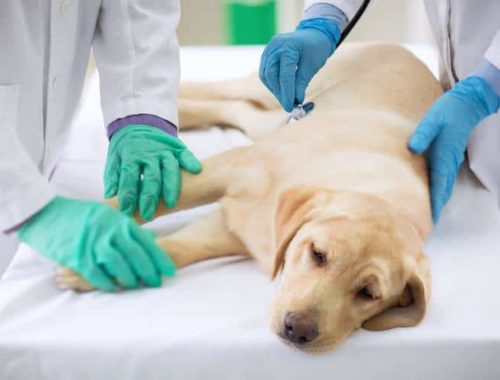You’re not weird if you look at your cat’s poop. You’re a responsible kitty guardian.
What would you do if one day, when you’re cleaning the litter box, you notice some of the stool has slimy, red clumps of blood on it. Don’t panic! Let’s talk about what to do if your cat has blood in its stool.
Different Kinds of Bloody Stool
There are different kinds of bloody stool situations when it comes to cats. The most common one is where you see normal, formed stool with red blood mixed in or on the outside of the log (no, that’s not the medical term, but it’s one of the nicer ways to describe poo).
Many cats have mild bloody stools occasionally and may not have any serious problems. Red blood usually originates from the lower digestive tract, namely the colon. Cats can have colonic irritation from any number of causes which I’ll discuss below.
If your cat’s stool is soft, mushy, or liquid with red blood mixed in, there is a bit more cause for concern. You’ll want to check into this sooner rather than later.
The last scenario is when you see formed or soft stool with dark red, even blackish blood in or on the feces. Dark blood means it’s been partly digested and may be coming from higher up in the GI tract. If you see this, schedule an appointment with your vet right away.
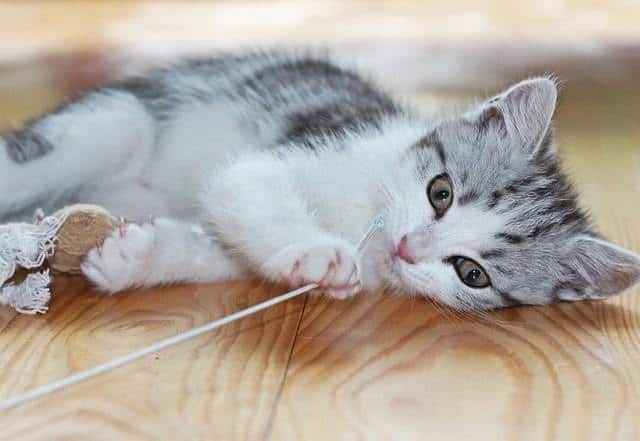
The 8 Reasons a Cat Might Have Blood in His Stool
The causes of bloody stool are practically endless. Here are a few of the major causes to consider:
- Food intolerance/medicine intolerance/dietary indiscretion– very common in all ages of cats
- Toxin– somewhat common, especially if your cat spends time outdoors or is known to get into things he shouldn’t
- Parasite/virus/bacteria– common in kittens, cats who go outdoors or come into contact with unknown cats
- Liver or kidney disease– common, especially in senior cats
- Inflammatory bowel disease– common
- Foreign object– somewhat common in young cats and those known to chew and swallow objects
- Tumor– somewhat common in older cats (about age 10 and up)
- Blood clotting abnormality– uncommon
Does Your Cat Have a Serious Problem?
Just because your cat has a bloody stool, it’s not necessarily time to panic! Look at the big picture to get a better perspective on the real threat level. Ask yourself these questions:
- Has his appetite or drinking changed?
- Has he lost weight?
- Has his activity level decreased?
- Does he have any other symptoms?
If you answered yes to any of these questions, you should make an appointment to see your veterinarian.
Diagnostic Testing for Cats with Bloody Stools
When you get to the clinic, your vet will do a physical examination to assess your cat’s overall condition. Sometimes abdominal palpation can raise suspicions of one disease process over the others. After that, your vet may recommend diagnostic testing to get a better idea of what’s going on. These might include:
- Fecal testing to look for parasites, especially in cats that go outside or are newly adopted.
- Blood tests can reveal changes in red and white blood cells, liver and kidney values, pancreatic activity, and vitamin B levels amongst other things.
- Abdominal radiographs and/or ultrasound imaging can check for tumors, pancreas inflammation, foreign objects.
- Abdominal exploratory surgery or endoscopy allows visual inspection of organs and collection of biopsy samples. These are usually done after the other tests. Many cats won’t need this level of diagnostic testing.
Simple Things To Try at Home
If your cat only has an occasional formed stool with a little blood and no other symptoms, it’s reasonable to try some changes at home first. If symptoms don’t improve after a month, see your veterinarian for help. If the symptoms get worse or new symptoms arise, take kitty to see his vet right away.
- Gradually change to a low residue or hypoallergenic diet. Ask your vet for recommendations.
- Cat experts recommend canned/moist food for all cats. Here’s how to get your cat to switch from dry food: CatInfo.org.
- Give a high-quality pet probiotic once a day for at least a month.
- Decrease cat stressors in the home as much as possible.
- Environmental enrichment–give your cat something to do! Check out the Indoor Pet Initiative site for ideas.
- Make sure you have enough space for all cats in the home. At least one litter box per cat, cat trees, etc.
- Feliway diffusers spread happiness through the use of feline facial pheromone analogs. Use for at least a month to see the full effect.
- Consider giving your cat some outdoor time in a safe place. You can try a cat harness and leash or an outdoor cat enclosure. A little fresh air can do wonders for the stress levels of humans and cats!
Featured Image Credit: Ro_ksy, Shutterstock


